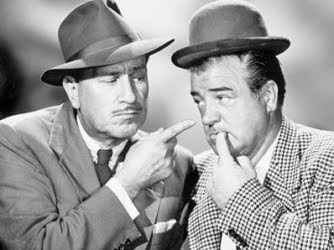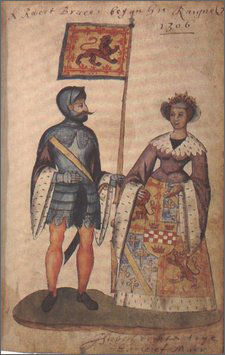Herbert Hoover not only lost the 1932 Presidential Election but he lost it by almost 18 percentage points. His ineffectualness at dealing with the Great Depression (the stock market crash occurred 6 months into his first term) was so obvious that Herbert won only 6 states – Pennsylvania, Delaware, R.I., Vermont, New Hampshire & Maine. And yet Herbert still had hopes he could engineer a come back, even though the New Deal had created six million jobs, had doubled industrial production and sent corporate profits from a $2 billion loss under Hoover to a $5 billion profit under Roosevelt.
On June ninth 1936 Herbert addressed the Republican Convention in the Public Auditorium in Cleveland, Ohio, and did his very best to rally the faithful to his cause. As Time Magazine detailed, “After 15 minutes (of) yelling, shrieking (and) hooting, (Hoover) was allowed to begin. …"Fundamental American liberties are at stake. Is the Republican Party ready…to cast your all upon the issue?" "Yes!" roared the crowd….".. have you determined to enter in a holy crusade for freedom which shall determine the future and the perpetuity of a nation of free men?" "Yes!" roared the crowd, in ecstasy.” The faithful went on chanting “Hoo-ver, Hoo-ver, Hoo-ver,” long after Herbert had left the stage.
Noted Time Magazine; “The demonstration could not be stopped for half an hour, even when Speaker Snell tried to introduce a little old lady, surprisingly pert for her 77 years, the widow of President Benjamin Harrison.” Finally Bertrand banged the big gavel and informed the crowd that Herbert had already boarded a train for New York. The floor demonstrations paused for a breath and quickly petered out.
Except, Herbert had not even left the building. He was waiting off stage to be recalled by the carefully prepared demonstrations and proclaimed the nominee by acclamation. What Hoover did not know was that Bertrand had already determined that the party nomine would be Governor Alf Landon, known affectionately to the faithful as “The Kansas Coolidge” - a moniker certain to inspire the base. Still, there were reasons to be optimistic about the governor.
Alf was the only Republican governor re-elected in 1934. He had a reputation as a fiscal conservative who cut taxes and balanced the state budget. That made him the Republican wonder-kinde, the perfect man to oppose the “tax and spend” Roosevelt.
There were a few problems with that image, of course. First, Landon balanced the Kansas budgets because he was required by law to balance them, and even that had been possible only because the New Deal had kicked in millions of dollars to offset the state deficits. Secondly, Alf publicly supported parts of the New Deal, so many parts that he was at odds with the Republican party platform. And the third problem with his choice as the nominee was that Alf was a terrible public speaker. He mumbled. And like any good mid-westerner even when speaking clearly he didn’t blow his own horn very much. As H. L. Mencken noted, he "simply lacks the power to inflame the boobs."
The party platform had been engineered by Bertrand and forty-four year old John Daniel Miller Hamilton, the “crinkly haired” “jut-jawed” G.O.P.’s general counsel, who reeked of “animal vigor.” Hamilton was actually paid $15,000 a year to be the parties’ attack dog. He was described by one fellow Republican as having, “…a seven-devil lust to live and shine under the blessings of the rich”. Hamilton made Alf's nominating speech, and then read a telegram from the Governor promising to support the anti-New Deal platform, which Hamilton had helped to write.
Said the platform; “For three long years the New Deal Administration has dishonored American traditions…has been guilty of frightful waste and extravagance, …it has created a vast multitude of new offices, …set up a centralized bureaucracy, and sent out swarms of inspectors to harass our people. It has bred fear and hesitation in commerce and industry, thus discouraging new enterprises, preventing employment and prolonging the depression….We pledge ourselves: To preserve the American system of free enterprise, private competition, and equality of opportunity.. We advocate: Abandonment of all New Deal policies that raise production costs, increase the cost of living, and thereby restrict buying, reduce volume and prevent reemployment. …”. To read the Republican platform you would have thought the nation was in much worse shape after the New Deal, than before.
Bertrand had a master plan for victory, funded by a $14 million war chest ($207 ½ million in today's dollars), with over a million dollars of that coming from just three families – DuPont, Pew and Rockefeller – and the rest almost entirely from business leaders anxious to prevent further Federal regulations of their business.
And then there was “The Liberty League,” described by one historian as “…the best-financed and the most professionally run…anti-big-government organization ever to come down the pike.” The League raised and spent as much cash as the two established parties combined (30% of it coming from the DuPont family alone). Its national headquarters occupied 31 rooms in the National Press Building and there were 20 state branches. Hamilton confessed later, "Without Liberty League money we wouldn't have had a national headquarters."
The campaign that followed saw the constant Republican repetition of attack. The New Deal became “The Raw Deal”. Franklyn Delano Roosevelt became “Stalin Delano Roosevelt”. William Randolph Hearst asserted in a pro-Landon editorial, “The Bolshevist tyranny in Russian has ordered all bolshevists, communists and revolutionaries in the Untied States to support Roosevelt!" It all sounds so familar, doesn't it? In late October 1936 the Republican National Committee sent checks for $5.00 to 400 black pastors in Maryland, along with a letter, which began, “Dear Brother,” and then argued that the G.O.P. had always done more to help blacks than the Democrats had.
The Young Republicans organization was founded during this election, to get out the youth vote. And fashion shows were staged to encourage women to support the party. Every show would start with a woman wearing a wooden barrel on suspenders, marked, “If The New Deal Wins”, followed by lovely models in Paris designs, marked “If Landon Wins." Women were expected to be swayed by such "fashion politics".
However, it appears that most Americans saw all of this Republican effort in the same light as FDR did, as illustrated by a story Roosevelt wrote himself for a speech he delivered in Boston. “In the summer of 1933 a nice old gentleman fell off a pier. He was unable to swim. A friend ran down the pier, dived overboard and pulled him out. But his silk hat floated away with the tide. After the old gentleman was revived he was effusive in his thanks. He praised his friend for saving his life. Today, three years later, the old man is berating his friend because the silk hat was lost.”
The election of November 3, 1936 was the most lopsided since James Monroe ran unopposed in 1820. Eighty-three percent of eligible voters showed up at the polls and Roosevelt won almost 61% of their vote. He carried every state in the union except Vermont and Maine, giving rise to the Democratic twist on the old adage, “As Maine goes, so goes Vermont”.
Roosevelt won 532 electoral votes to Landon’s 8. Seventy-one percent of Black Americans voted Democratic, as well as 57% of women, 63% of men, 76% of low income voters, 80% of Catholics and 86% of Jewish voters. After the election the Democrats held the Senate, 75-16, and the House contained 332 Democrats to just 88 Republicans. Things would get even worse for the Republicans in the next few years. John D. Hamilton would say after the election, "The Lord himself couldn't have beaten Roosevelt in 1936, much less the Liberty League."
Maybe; but the election was the death knell of the Liberty League. They lingered into 1940, when the DuPont family finally pulled their funding, and the group then quietly died. Long before that John Hamilton had his own reactionary reckoning. In 1937 Hamilton's wife sued him for divorce, on the grounds of “gross neglect of duty, abandonment and extreme cruelty.” That same year Alf Landon had Hamilton removed as Party Chairman, as Landon rebuilt the party in his own Midwestern less reactionary less idelogical image.
Under Landon's non-red baiting non-FDR hating guidance the party stopped trying to overturn the New Deal and began to climb its way back. The Republicans would gain strength until 1948 when it looked like they were certain to regain the White House. But in that campaign they gloated too much about finally overturning the New Deal, and that public gloating handed Harry Truman his re-election. It was not until Ronald Reagan in his 1981 inaguration speech that the G.O.P again openly called for overturning the New Deal programs.
And Bertrand Snell, the Minority Leader of House of Represenatives? He had been one of the few Republicans re-elected in 1936. But he did not run again in 1938. Instead, he went into the newspaper business. He published the Potsdam, New York "Courier-Freeman" and ran it until 1949. He also became the owner of the New York State Oil Company. He was ably qualified for both of those jobs. He died in 1958, while a Republican had finally reoccupied the White House. But even Dwight D. Eisenhower was a RINO in some eyes. He was accused by the Republican right wing of running a "little New Deal", still just about the worst insult a Republican could imagine.
- 30 -

























_03.jpg)






































































